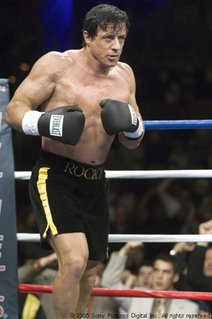I once joked
with Brian Dennehy that we had him to blame for the whole Rambo franchise. After all, if his small-town lawman hadn’t pushed
Sylvester Stallone’s troubled Vietnam vet to the brink during the original First Blood (1982), John Rambo wouldn’t
have gone on the rampage in the first place.
“Yeah,”
Dennehy responded with a wolfish grin, “they’ll probably wind up putting that
on my tombstone: ‘He Pushed John Rambo Too Far!’”
But, then
again, maybe not. By the time of his passing Wednesday evening at age 81 — a
good 30 years after we shared that exchange at the New York press junket for Presumed Innocent — Dennehy had amassed
an amazing number of impressively diverse stage and screen credits, most of
them dutifully noted in my Variety colleague Carmel Dagan’s obituary tribute. To
put it simple and gratefully: He was too prolific and prodigious to ever be name-checked
for a single role.
The first time I spoke with the late, great actor was at the
1987 Cannes Film Festival, shortly after the world premiere of Peter Greenaway’s
The Belly of an Architect. I am posting this interview, which originally
appeared in a slightly different form in The Houston Post several weeks before
that movie’s U.S. release, not because of his extraordinary performance in that
drama, but rather because of what Dennehy revealed about what acting meant to
him. I’d be willing to bet he always had that same fire burning inside him.
Brian Dennehy, character
actor extraordinaire, currently can be seen as a part-time author and full-time
cop in Best Seller, an offbeat
thriller in which he co-stars with his friend James Woods. Next year, he’ll be seen
in The Return of the Man from Snowy River,
in a role Kirk Douglas played in the first Snowy
River adventure. “Kirk’s cleft fell out,” Dennehy jokes in his
typically gregarious
fashion, “and they had to replace it. So I’m filling in for him.”
But during interviews at
film festivals in Cannes and Toronto this year, Dennehy spent most of his time
talking about a far more esoteric project: The
Belly of an Architect, Peter Greenaway’s bizarrely stylized drama about a middle-aged
American architect who loses his dignity, his sense of purpose and his much
younger wife while overseeing an exhibition in Rome.
Dennehy stars in the film,
which will be released later this year, as Stourley Kracklite, the architect
who comes to question the value of everything, and everyone, he has held dear.
It’s a character Dennehy could identify with very easily.
“When I read this script a
year and a half ago,” he told me at Cannes, “I was going through a period —
which I'm still going through, to a certain extent — of trying to deal with the
fact of being 48, of having achieved a certain success, a certain celebrity.
And having to come to terms with the fact, which everyone has to come to
terms with, that's it's all bullshit. It doesn’t really mean anything.
“In other words, you spend
20 years of your life saying, ‘If I ever get to this place, if I ever get what
I want, I'll be happy. All the mysteries of the world will be solved, and I
will know what’s right.’ Well, you get that. And then you say to yourself, ‘You
know something? The mysteries are not all solved. And I’m not particularly
happy. And it really doesn't make a goddamn bit of difference that you get what
you want.’”
Not that Brian Dennehy is
a bitter man. Not at all. He ppreciates the respect and acclaim he has earned
in such high-profile supporting roles as the friendly alien in Cocoon, the cheerfully corrupt sheriff
in Silverado, and the hard-charging
New York cop in F/X. And he is extremely grateful to director Peter Greenaway for
casting him in Architect, the first
movie where he has received top billing.
But for Dennehy, there's
something more important than the billing, the good reviews and the public
recognition. For him, the most important thing is simply acting.
“The first thing I noticed
about Kracklite is, Kracklite is a man who is obsessed. And I am obsessed — I
am obsessed with acting. I'm obsessed with what I do. And I have come to terms
with that. There was a time, four or five years ago, when people would say to
me, ‘You’ve got to find something else. Get yourself a nice
girlfriend, get on your sailboat and sail away, find something else. You can’t just
care about this one thing.’ But eventually, I got to the point where I figured,
‘This is the only thing I care about. This is the only thing that interests me.
Yes, I am obsessed with it.’
“If you're really lucky,
after going to a psychiatrist three times a week for 20 years, the psychiatrist
says, ‘You're not changed, but now you know what you are, you know how you are.
And you can live with that.’ Well, that’s the way I feel.”






